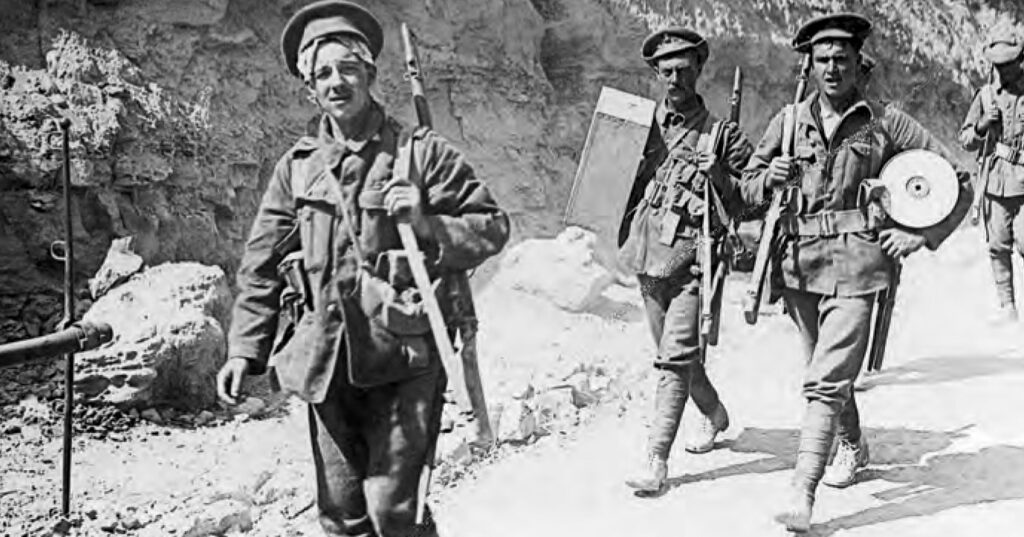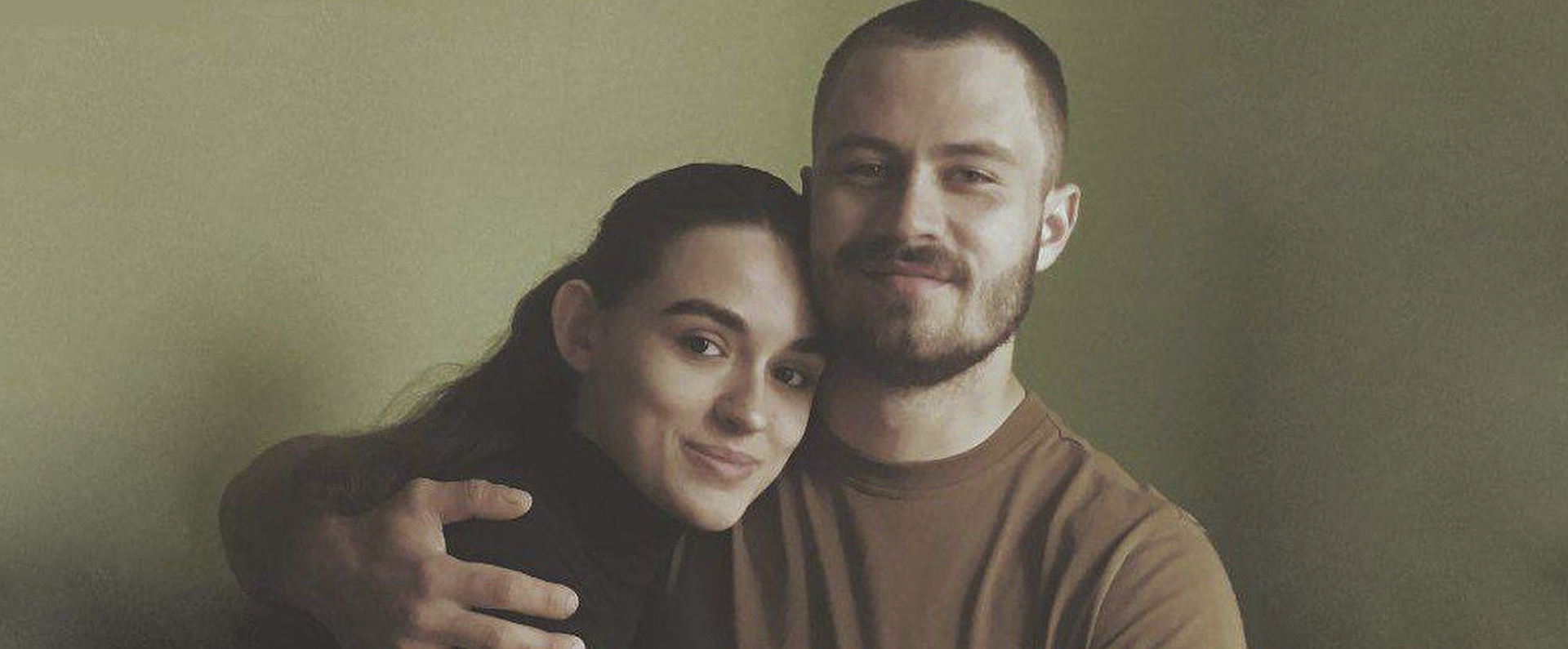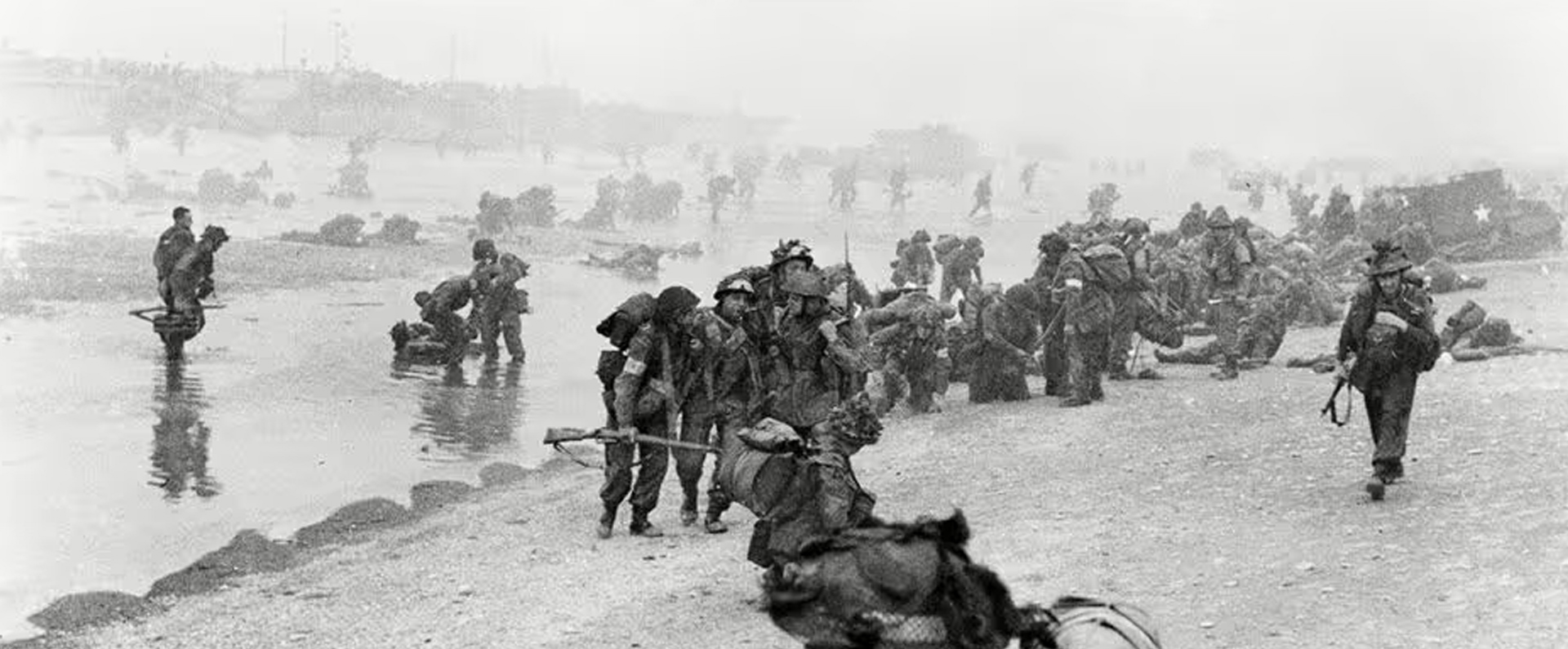
Published in Britain at War in June 2020.
Captain Gerald Robert O’Sullivan VC
Captain Gerald O’Sullivan was awarded his posthumous VC for two quite exceptional actions at Gallipoli, the failed 11-month Allied campaign that cost an estimated 250,000 casualties on each side during the Great War.
Gerald Robert O’Sullivan was born in Frankfield, near Douglas, County Cork, Ireland, on November 8 1888. He was the only son of Lieutenant Colonel George O’Sullivan, of the Argyll and Sutherland Highlanders, and his wife Charlotte (nee Hiddingh). The young O’Sullivan was privately educated at Greenwich, south-east London; Wimbledon College, south-west London; and Southsea, Hampshire.
During his school days, he earned a reputation on the sports pitch and in the classroom as a daring, but also a headstrong and rash, character. After leaving school in 1906 aged 17, he attended the Royal Military College, Sandhurst. He was commissioned into the Royal Inniskilling Fusiliers in May 1909 and joined the 2nd Battalion in Dublin, the city where he had spent some of his childhood.
Shortly after the outbreak of the Great War in August 1914, and having previously served in China and India, O’Sullivan returned with his regiment to Britain: the 1st Inniskillings helped form the 29th Division that was destined for operations in the Dardanelles. By then with the rank of captain, he landed at X Beach, Gallipoli, on April 25 1915. He served with distinction, and without mishap, for the first six weeks of the Gallipoli campaign. However, it was for two significant actions in mid June and early July of 1915 that O’Sullivan was awarded the VC.
June 18 1915 marked the 100th anniversary of the Duke of Wellington’s victory at Waterloo and the date did not go unrecognised among the British forces serving in the Gallipoli campaign. However, as Stephen Snelling noted in his book VCs of the First World War: Gallipoli: “With little sense of history, the Turks had indeed contrived to spoil the party by launching a fierce assault on a recently captured extension of the British line at the eastern edge of Gully ravine.”
On June 11, the British forces had succeeded in capturing 70 yards of “Turkey Trench” that the enemy had held in fighting on June 4. However, on the evening of June 18, the Turks tried to win back this area and there was heavy shelling of the 2nd South Wales Borderers, manning the recently-gained trench, from 6.30pm. A heavy bombardment was followed by an initial assault that was fended off.
However, the second assault, launched shortly before 9pm, was more successful and the north-west sector of the trench was seized, with the enemy killing or wounding its occupants. After a senior officer was killed, the remaining South Wales Borderers fled leaving “Turkey Trench” back in enemy hands and a gap in the line. The immediate knock-on effect of the trench falling into enemy hands was that the Turks bombed an area occupied by B Company, the 1st Royal Inniskillings. British military commanders responded by issuing orders for the gap “to be made good by force and to be maintained by force”.
Enter Captain O’Sullivan: he led A Company from his own regiment and a platoon from C Company as they moved forward to tackle the enemy. Armed mainly with modestly-effective “jam tin” bombs, they regained the battalion’s lost fire-trench and, working with a party of South Wales Borderers, some 30 yards of “Turkey Trench”, all by 9.15pm.
But the Turks hit back and seized back 20 yards of the crucial trench. As the battle raged this way and that, O’Sullivan called for assistance to fend off the Turkish assault. However, he also resolutely refused to budge from the end of “Turkey Trench”, knowing how difficult it would be to establish another toe-end in the vital position.
At 3.30am on June 19, a party of South Wales Borderers launched a fresh offensive but this was thwarted. By then General W.R. Marshall, the General Officer Commanding (GOC) of 87th Brigade, was on the scene and, after discussions with his officers, yet another assault was planned. This attack was detailed in the Inniskillings’ war diary: “4.30 a.m. Capt O’Sullivan with bomb party of about 6 men together with SWB [South Wales Borderers] bomb party drove enemy down Turkish sap. Enemy then endeavoured to evacuate sap by retiring across the open, but were shot down by rapid fire from A and B Coys. Remainder of enemy in Turkish Sap (13) taken prisoners.”
This was an oversimplification of events: in fact, the battle was still raging at dawn and it was not until 5.15am that 30 yards of trench was in British hands and it was not until 10am that the whole of Turkey Trench was once again back in British hands. The fighting over the two days had been ferocious leaving an estimated 200 Turks dead and some 175 British soldiers dead or missing. According to the 87th Brigade’s war diary, O’Sullivan had “behaved magnificently throughout” and was therefore recommended for the VC. In the short term, however, he was treated for minor wounds and Mentioned in Despatches.
Less than two weeks later, however, O’Sullivan, then aged 26, was back in action on the frontline when the Inniskillings played a significant role in the Battle of Gully Ravine, south-west of Krithia, another part of the Gallipoli peninsular. June 28 had been an important day for the British forces when they captured and consolidated two trenches, J10 and J11, situated on the western edge of Gully Ravine. Anticipating that the Turks would try to seize back its lots territory, British commanders were ordered to hold J11a “at all costs” and a new trench was dug in an attempt to strengthen the position. Digging for this new trench – later known as “Inniskillings Trench” – began during darkness on the night of June 30. The following evening, on July 1, the digging continued but at around 9.30pm events escalated as the Turks launched a significant assault on the British positions.
The fighting throughout the night was reminiscent of the battle for “Turkey Trench” less than a fortnight earlier in that the advances by both sides went to and fro and the situation was often confused. One of the best reports of the action that day came from Colonel E.J. Buckley, in temporary command of the Inniskillings, who later wrote: “On arriving at the junction of J11a and J12 Capt O’Sullivan found the situation changed [from earlier reports] as J12 was occupied by the Turks, who were in fact driving out the Gurkhas [2/10th Gurkha Rifles]. He decided to carry out his original plan to move down J12 to relieve B Company and to attack the Turks in J 12 and recapture the trench.
“He immediately attacked, leading the storming party. Accompanied by Cpl [James] Somers, he advanced in the open along the parapet of the trench, bombing the interior as he regained it. The Turks bombed back and from where I was I could distinctly see the flashes of the Turkish bombs, generally two to Captain O’Sullivan’s one. We had only the jam-pot bomb…while the Turks had quite a useful bomb.
“Capt O’Sullivan cleared the trench as far as the Birdcage and, leaving a garrison in the trench, proceeded to disengage B Company, leaving Capt Edden to continue the attack on the Turks.”
However, during the fighting O’Sullivan received a serious leg wound and eventually had to hand over the command of the Inniskillings on the ground to Captain Edden. Eventually, too, after further fighting, the British had to abandon J12 leaving the Turks to reoccupy the trench once again. The battle resulted in the Inniskillings having six men killed and 37 injured, including O’Sullivan, wounded.
“Well done Inniskillings” read a telegraph received by Captain Edden at 9am on July 2 and sent by Major General B. de Lisle (GOC 29th Division). Three men had acquitted themselves superbly during the fighting: O’Sullivan who was (again) recommended for the VC, Corporal Somers who was promoted to sergeant in the field and also recommended for the VC and Captain Edden who was recommended for the Distinguished Service Order (DSO).
However, Edden’s award never materialised: he was, aged 29, killed in action on August 21 and his only posthumous recognition for his relentlessly bravery during the Gallipoli campaign was a posthumous Mention in Despatches. Both O’Sullivan and Somers were evacuated to Egypt and treated at a hospital in Cairo: the latter was then sent back to Britain to recuperate from injuries to his back caused by bomb splinters, while the former made a rapid recover from his serious leg wounds and remained in Egypt. Both men were awarded the VC for their bravery at Gulley Ravine (also known as Gully Spur).
However, O’Sullivan’s VC was a posthumous award: he had reported back to his battalion on 11 August having been away for less than six weeks. This coincided with the 29th Division’s move to Suvla Bay, where it was hoped there would be a big offensive against the Turks in the northern sector of the country.
On August 21, and having recently been told of his VC award, O’Sullivan and his depleted Inniskillings were given the task of seizing Hill 70 (also known as Scimitar Hill) as part of a major attack that day. Amid chaotic scenes, O’Sullivan’s leadership skills were matched only by his courage as he led his men through a hail of heavy fire on the crest of Hill 70. When the party was forced back by artillery fire, he regrouped his men in a gully some 400 yards beneath the hill top and urged them to make ‘one more charge for the honour of the Old Regiment’. Fifty men charged forwards but they were, yet again, struck by a hail of bullets and, one by one, many of them wounded, and they had to retreat. O’Sullivan was missing in action, and a private witnessed him being killed outright by a blow to the head.
As the O’Sullivan family grieved their son’s death in Co Cork, there were contrastingly joyous scenes on August 28 1915 in another part of Ireland over the imminent award of the VC to the newly-promoted Sergeant Somers.
O’Sullivan’s VC was announced on the same day as Somers: September 1 1915 – the former’s citation highlighted his bravery at “Turkey Trench” as well as Gully Ravine. O’Sullivan’s decoration was posted to his mother on September 26 1915.
O’Sullivan has no known grave. However, his name is listed on both the Helles Memorial, Gallipoli, and the Dorchester War Memorial in Dorset. Furthermore, his name is on the regimental plaque at St Anne’s Cathedral in Belfast, Northern Ireland. I purchased this courageous soldier’s gallantry and service medals privately in 2007 and I feel privileged to be their custodian of them more than a century after O’Sullivan’s brave death.
Download a PDF of the original Britain at War article
For more information, visit:
LordAshcroftOnBravery.com


